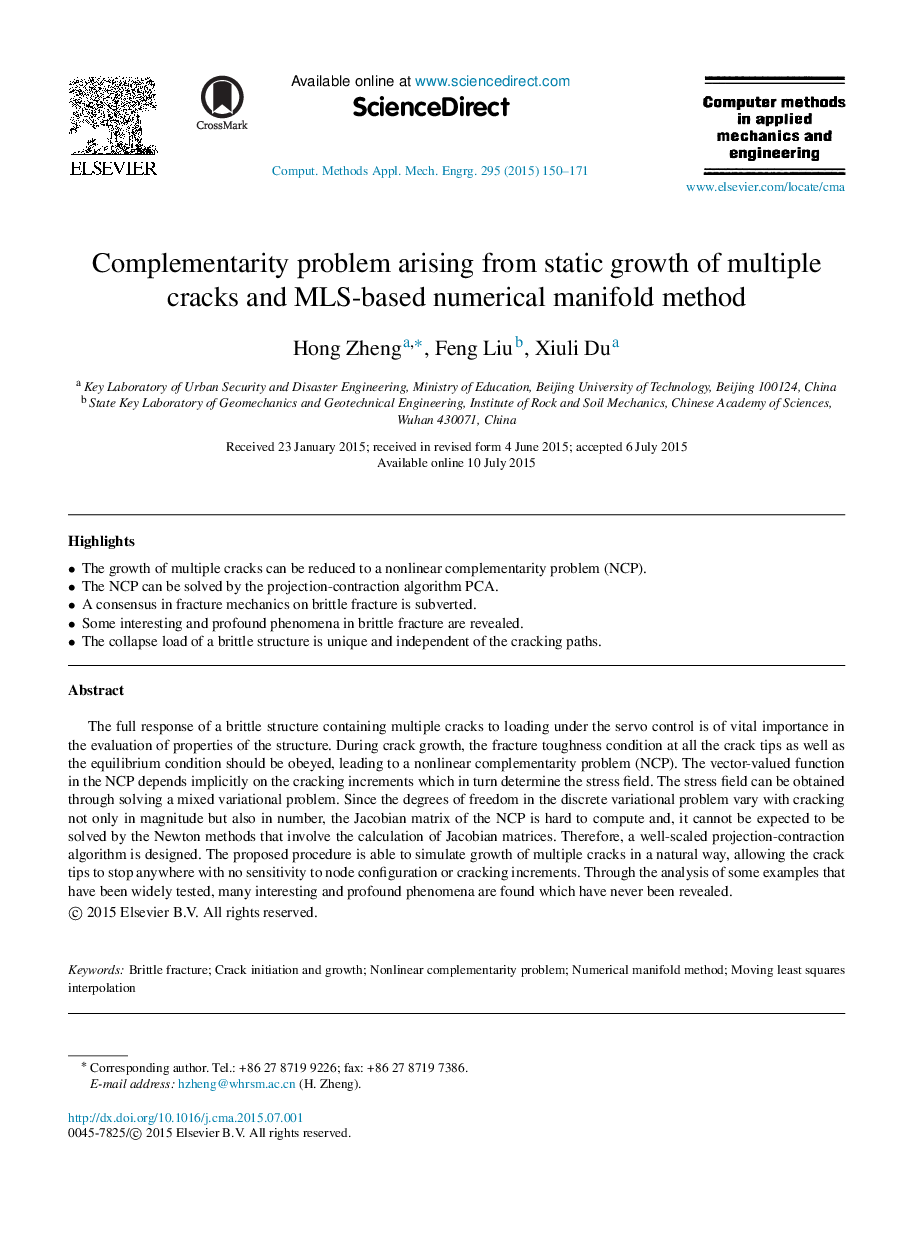| Article ID | Journal | Published Year | Pages | File Type |
|---|---|---|---|---|
| 497635 | Computer Methods in Applied Mechanics and Engineering | 2015 | 22 Pages |
•The growth of multiple cracks can be reduced to a nonlinear complementarity problem (NCP).•The NCP can be solved by the projection-contraction algorithm PCA.•A consensus in fracture mechanics on brittle fracture is subverted.•Some interesting and profound phenomena in brittle fracture are revealed.•The collapse load of a brittle structure is unique and independent of the cracking paths.
The full response of a brittle structure containing multiple cracks to loading under the servo control is of vital importance in the evaluation of properties of the structure. During crack growth, the fracture toughness condition at all the crack tips as well as the equilibrium condition should be obeyed, leading to a nonlinear complementarity problem (NCP). The vector-valued function in the NCP depends implicitly on the cracking increments which in turn determine the stress field. The stress field can be obtained through solving a mixed variational problem. Since the degrees of freedom in the discrete variational problem vary with cracking not only in magnitude but also in number, the Jacobian matrix of the NCP is hard to compute and, it cannot be expected to be solved by the Newton methods that involve the calculation of Jacobian matrices. Therefore, a well-scaled projection-contraction algorithm is designed. The proposed procedure is able to simulate growth of multiple cracks in a natural way, allowing the crack tips to stop anywhere with no sensitivity to node configuration or cracking increments. Through the analysis of some examples that have been widely tested, many interesting and profound phenomena are found which have never been revealed.
